Table of contents
Who hasn't found himself one day in front of a washing machine, his dirty laundry in hand and totally lost? And yet, in order to stop hesitating about the best way to wash your clothes, there are indications that are given and that have nothing to do with the maintenance and cleaning of sneakers!
Have you ever had the curiosity to take a look at the label hanging on your clothes? No ? That's why you don't know how to treat your laundry! Because, indeed, everything is indicated on this little piece of fabric.
But of course, everything would be very simple if the recommendations were clearly indicated! But as you know, this is not the case. That's why I'm going to tell you more about the symbols you need to know to take care of your laundry.

© Can Stock Photo / magurok
Getting to know laundry labels and their symbols
When you look at a label, the first thing you see are strange little drawings. But these correspond to various specific indications. Since 2012 and the decree 1235 on textile fibers and products, a marking has been established throughout the European Union.
The Groupement International d'Étiquetage pour l'Entretien des Textiles (or Ginetex) has developed different pictograms to best maintain one's laundry at each stage: washing, drying, ironing. These symbols must comply with the ISO 3758:2012 standard. They indicate how to maintain the laundry according to the textile.
The washing pictograms in detail
There are 29 main symbols: 7 for washing, 3 for bleaching, 11 for drying, 4 for ironing and 4 for dry cleaning.
Symbols related to washing
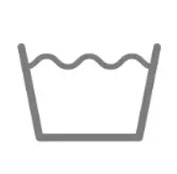
The tank filled with water
This simple symbol has an equally simple meaning: the laundry can be washed in water. Without further clarification, it can be machine or hand wash. When this tank is crossed out, it obviously indicates that the laundry must not be washed in water. It may be a particularly delicate textile. It will then be necessary to turn to a dry cleaning, made by a professional.
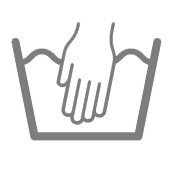
The tank filled with water with a hand
Logically, the presence of a hand indicates that the washing must be done... by hand! Attention, if this symbol is present, it means that the linen cannot be washed in the machine under penalty of being damaged. The washing temperature must not be higher than 40° (this also avoids burning!).
If your machine has a hand wash program, you may think that this is the perfect solution to avoid getting your hands wet? In fact, these programs are not delicate enough (no matter what the manufacturers say), and it is better to use a cold program if you really don't want to waste time.
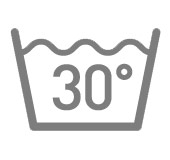
A tank with a number
Can you see 30, 40, 60 or 95 in the tank? This means that the laundry can be washed at this temperature (indicated in degrees Celsius). This is the maximum temperature. If you want to wash your laundry at a lower temperature, it is possible. Any hotter will damage the fabric (and the colors).
Keep your eyes open! Other information may be mentioned with this symbol.
There are no lines under the tank? This means that the laundry requires normal rinsing and spinning.
If there is only one bar under the tank, the recommended spin rate is reduced. Two bars? You should choose a reduced wash program. Rinse and spin will be normal.
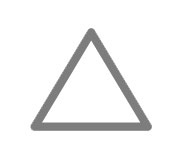
Bleaching in symbols
The field of bleaching is symbolized by a triangle. A simple triangle indicates that you can use any type of product to bleach your laundry (oxygen or chlorine). This corresponds to fabrics that are not very sensitive (like cotton, for example).
When the triangle contains two slashes, bleaching will only be possible with non-chlorinated products (oxygen-based).
Finally, a triangle with a cross through it means that bleaching is impossible, whatever the product used. It is therefore impossible to remove it with bleach or an oxygenated agent. You should also make sure you choose your detergent carefully. Many detergents contain bleaching agents (especially those in powder form). Remember to check the label on the packaging.
Symbols related to drying and spinning
If you decide to dry your laundry in the washing machine, you should pay attention to the dedicated symbol to avoid accidents. The symbol to look for at this stage is a square.
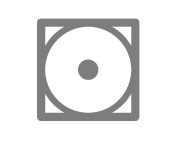
A dot in the center of a circle in the center of the square
When the square contains a circle, it means that the fabric can be dried. The circle can contain one or more dots. The number of dots tells you the maximum temperature allowed for perfect drying. One stitch is equivalent to a temperature of 60°. With two dots, you can go up to 80°.

The crossed-out square
A square containing a circle and completely crossed out indicates that the fabric cannot be tumbled.
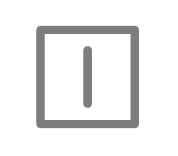
A square with a line
Your label may show you a square with a vertical line (or two vertical lines) in the center. If there is only one line, it means that the laundry should not be tumbled (however, it can be dried on a very low temperature if you really don't have the time, unlike the crossed out symbol). The laundry can be tumble dried.
Two lines indicate that machine drying is strongly discouraged, as is spinning. For these fabrics, perfect drying is done on a line, letting the water drip off gradually. This symbol is mainly found on garments that do not tolerate spinning, such as comforters or comforters.
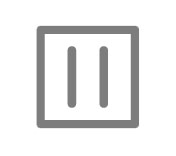
A square with vertical lines and an extra bar
If you see a bar in the upper left corner, it means that the laundry should be line dried, but in the shade. One vertical line always means that the laundry can be machine spun before it is hung. If you see two lines, you should not spin dry.

A square and horizontal lines
If you see one or two horizontal lines in the square, it indicates that the laundry should be dried flat. This type of drying is recommended on fabrics that can warp like wool or acrylic. Remember, I already mentioned the difference between one and two lines. Remember? One line, machine spinning is allowed. Two lines: no. Natural fibers like alpaca require this type of drying.
These squares can again be completed with a bar in the upper left corner. This indicates that the drying should be done in the shade (I repeat myself, I know).
Ironing in symbols
The last step before putting your clothes away in the wardrobe: ironing. Here again, different symbols help you to know what to do. You can easily recognize the dedicated symbol, since it represents an iron. The presence of this one indicates that you can iron your fabric (except of course if it is crossed out). Yes, but at what temperature will you ask me?
Here again, it is indicated! A single dot in the center of the iron means that you should be reasonable and not exceed 110°. Two dots give you a little more freedom. The laundry can withstand a maximum temperature of 150°. Three dots and you can go up to 200°.

Dry cleaning
I have already mentioned that some fabrics can't be washed by machine or by hand. In this case, you'll have to go to the nearest dry cleaner and leave your garment in the care of a professional.
Before you leave, take another look at the label to make sure it doesn't contain a single crossed-out circle symbol. This means that the fabric cannot be dry cleaned.
If there is a letter in the circle, it indicates which solvent should be used (or not) to clean the fabric.
A circle containing a P indicates that the garment does not support trichloroethylene. An F is present? The professional will have to use a petroleum solvent. You may also find a W. In this case, a professional wet cleaning is required.
A line under the circle brings an additional information: the cleaning cycle must be moderate.
You are now ready to make your machine and thanks to me, you will not make any mistake!
